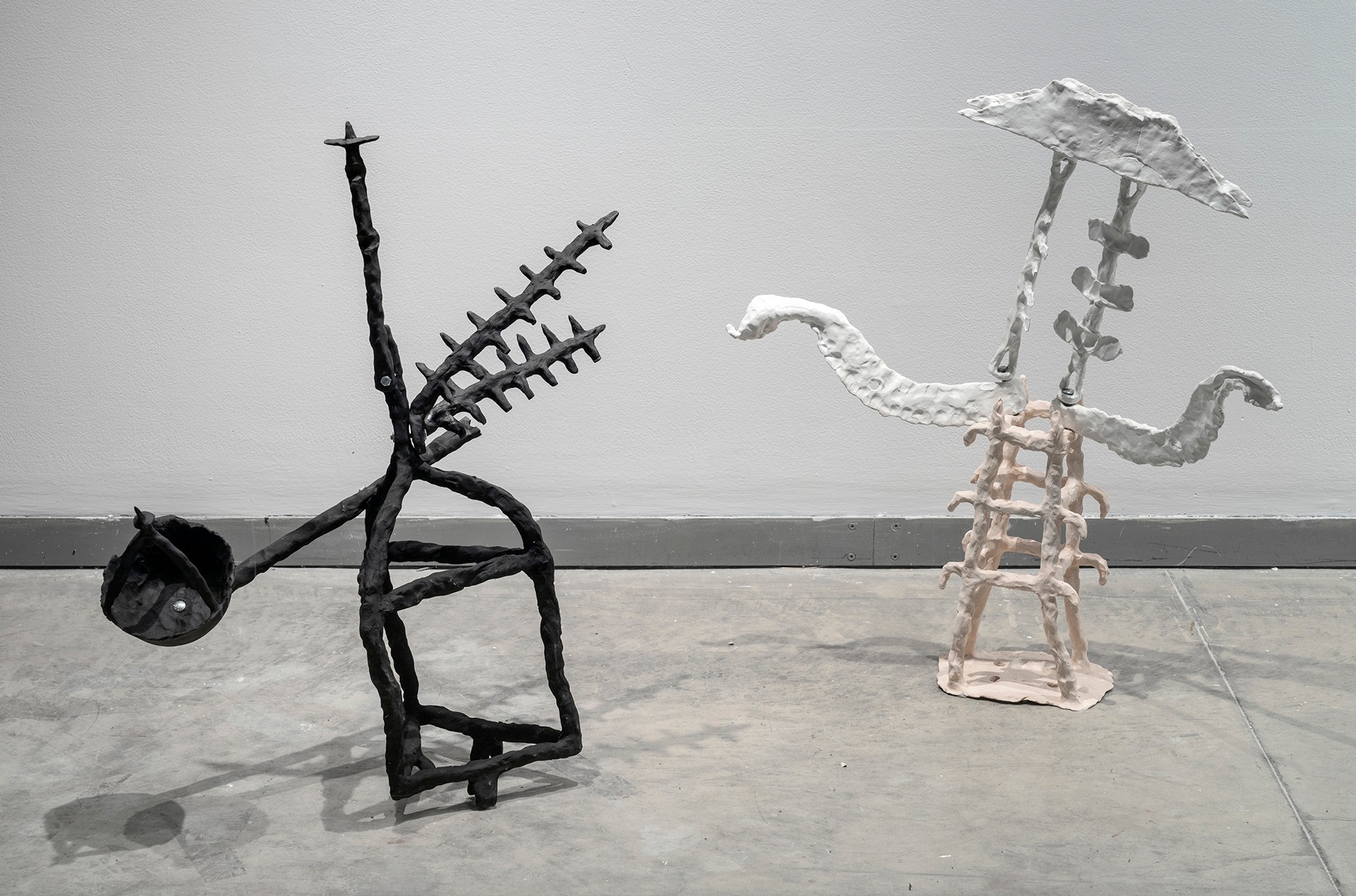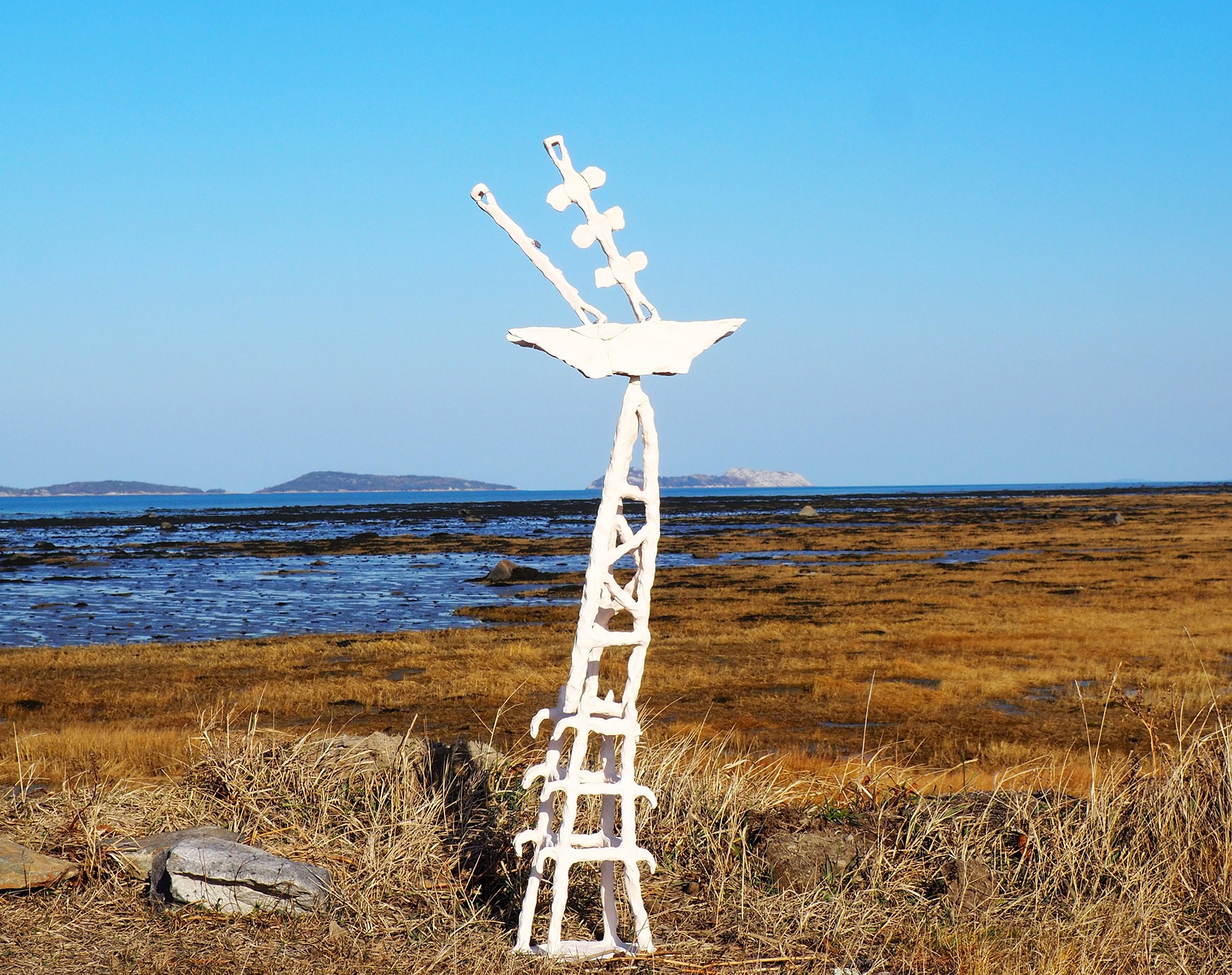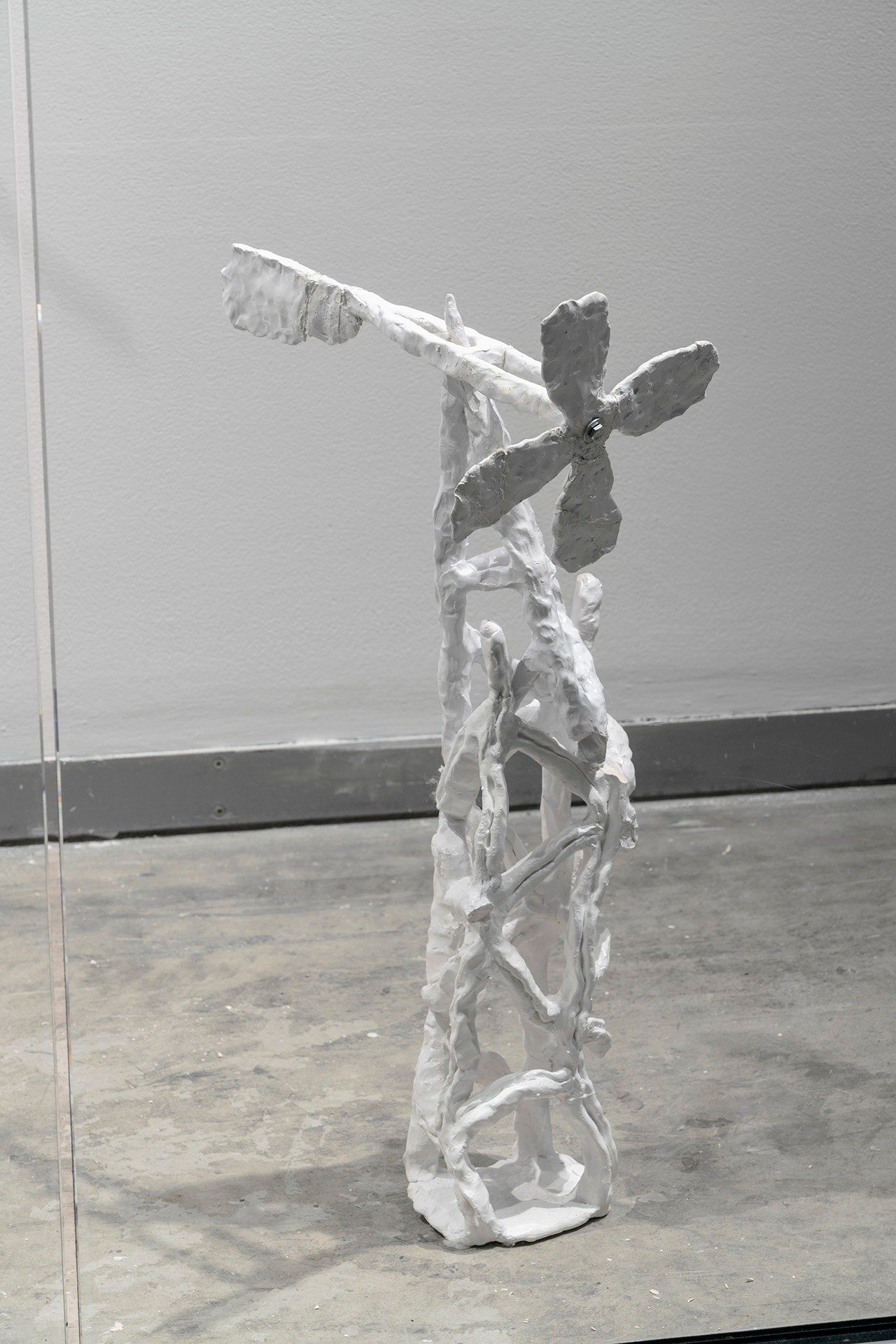ALICE ZERINI-LE RESTE
Les icônes
2020–2021

Ceramic, 3 X (50" X 10" X 10") approx.
Artist statement
The sculptural series, Les icônes, turns towards the magnificence of mundane objects and the ambiguous overlap that can exist between past and present, the mechanical and the organic, the imaginary and the real. Drawing from the agricultural environment and the roofs of the cityscape; a plow and a parabolic dome are transposed into vertiginous, unusual and precarious ceramic. These vestiges from another time are deconstructed and transformed to embody a new balance of precariousness, and absurdity.
 Photo by Guy L’Heureux
Photo by Guy L’Heureux
Artist’s biography
Alice Zerini-Le Reste is a multidisciplinary artist mainly exploring ceramics and drawing. Zeini-Le Reste is currently completing her bachelor's in visual arts at Concordia University. Originally from Montreal, her creative work is nonetheless transient, and the results are the fruit of an engaged encounter with the landscape.
Also working as a sailor on the St. Lawrence River, notions around territories and movement anchor her work. It is on the sea that she rediscovers the relationship between displacement and the body, highlighting a sustained physical connection with the landscape that unravels slowly and in stillness.

Essay
Traces of Unfathomables Places
Author Yann Pignard
Artist Alice Zerini-Le Reste
Artwork Les icônes, 2020–2021
Les icônes is a series of sculptural works by artist Alice Zerini-Le Reste that started in Kamouraska in the fall of 2020 and was completed in Montreal in the spring of 2021. The five ceramic structures are made of about thirty elements: the white components, the Machines, and their black counterpart, the Antennas. Assembled with bolts, these modular elements allow a wide variety of combinations. Through the delicate unpacking of the pieces, the choice of arrangements, and by presenting the works on the floor, Zerini-Le Reste integrates a performative dimension into this installation, at the crossroads of ritual and maintenance. At first sight, Les icônes invokes unfathomable places and the sublime, keeping the audience at an infinite distance. However, the sensuality and the tactility of the work become an invitation to touch and to get closer. Between these tensions lies our ambiguous relationship to technology that threatens a fragile balance.
At a distance, mechanical forms arise under the guise of an organic and timeless framework, shaped by natural elements and time. The aesthetic minimizes the utilitarian purpose of the machines and the invocation of their purpose as tools. Presented collectively, the common element is no longer just in their function as machines but in all the places to which they are specifically attached. Les icônes remain markers of timeless and inaccessible places: roofs (antenna), the sky (weather vane) or the maritime horizon (ship).

Photo by Guy L’Heureux
Between these tensions lies our ambiguous relationship to technology that threatens a fragile balance.
As one gets closer to the work, the notion of the sublime fades. Standing a few inches apart, traces of the creative process are omnipresent: fingerprints, duplication of their referent,1 the artist, cover all surfaces. What first appeared as an architectural and immutable framework, is transformed into a palpable and living flesh by the gestural folds preserved in the soft clay. The transition to these traces is destabilizing.
While the distance symbolized by the “do not touch” of the art gallery imposes an artificial and technical detachment, the invitation to touch the artist’s marks and the facsimile rendering of surfaces derived from skin make us aware of our own bodies and our own presence. This imbalance between distance and closeness2 seems to question our relationship to technique. As Jacques Ellul argues, if technique is the optimization of everything,3 how should we interpret the mark-making techniques in this work?
Moreover, Zerini-Le Reste appears to subvert the notion of technique as a vehicle for optimization since ceramic is not the best-suited material for vertical or large works. The structural fragility of Les icônes is the result of the random shapes inherent in the technique used. Firing experimental forms in the kiln can be full of surprises and failures. If technology is no longer at the service of optimization, then what is it for? Can technique serve art?
Beyond the machines that dominate our visual field, horizons, and our landscapes, in both urban and rural fabrics, Les icônes reminds us that the sublime remains, even when fading beneath our touch. Outside of the procedures, the processes, and the technological acceleration that erase space and time, there is a relationship to the physical to the tactile world that we must rediscover to better appreciate and protect it.
- Georges Didi-Huberman, La ressemblance par contact, 118. Paris: Les Éditions de Minuit, 2008.
- Ibid., 115-125.
- Jacques Ellul, The Technological Society. New York: Knopf, 1967.
 Photo by Guy L’Heureux
Photo by Guy L’Heureux
 Photo by Guy L’Heureux
Photo by Guy L’Heureux
Author’s biography
YAPI is a multidisciplinary artist originally from the coast of Brittany and now living in Montreal, Quebec. Mostly engaged in site-specific installations and tridimensional practices, he is currently a BFA candidate in Studio Arts at Concordia University. Prior to a career shift in 2020, he held various positions in the pharmaceutical industry. Investigations on materials, spaces, everyday objects and processes in relation to technique and optimization infuse his research. Aesthetically, he is dedicated to the pursuit of creative tension between precision and freedom.
